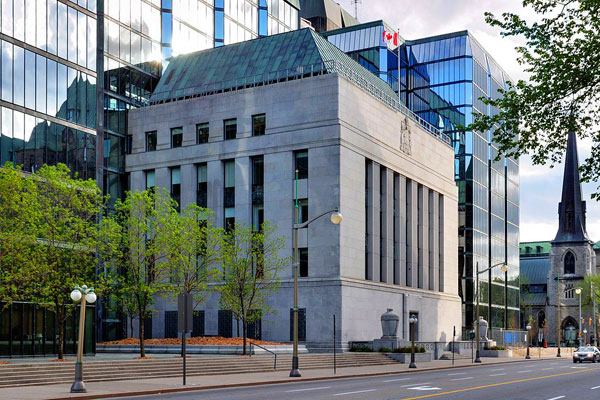Bank of Canada keeps rates steady, cuts language about future hikes
4/24/2019
| SHARE
Posted in Interest Rates by Vanguard Realty | Back to Main Blog Page

Canadian interest rates are almost certainly on hold until at least sometime next year.
The Bank of Canada published a revised outlook on April 24 that shows the economy essentially stalled over the last six months, extinguishing the sparks that had caused policy makers to starting worrying about inflation.
Stephen Poloz, the governor, and his deputies left the benchmark rate unchanged at 1.75 per cent, as expected. They also erased from their policy discussion any suggestion that interest rates could rise in the foreseeable future, a pivot that suggests the pause that began in December is now a hiatus.
“Governing Council judges that an accommodative policy interest rate continues to be warranted,” the new policy statement says. “We will continue to evaluate the appropriate degree of monetary policy accommodation as new data arrive.”
Canada’s economy was cruising at the start of the last year when a plunge in oil prices, higher interest rates, and U.S. President Donald Trump’s trade wars converged to create a torrent of headwinds.
Gross domestic product was growing at an annual rate of two per cent in the third quarter, then decelerated to rates of 0.4 per cent in the fourth quarter and 0.3 per cent in the first three months of this year, according to the central bank’s new quarterly Monetary Policy Report (MPR).
Those numbers will keep alive talk that Canada is on the verge of a recession. The central bank — and many others — failed to detect the severity of the slowdown.
In October, policy makers predicted GDP would grow at an annual rate of 2.3 per cent in the fourth quarter, and then in January they revised that estimate to 1.3 per cent. They also were overly optimistic about growth in the first quarter, predicting an annual rate of 0.8 per cent in the January MPR.
Poloz and his deputies said they correctly adjusted for the drag from lower oil prices. Their mistake was assuming that non-energy exports would do OK and that executives would increase investment in order to keep up with demand.
But both have struggled, robbing the economy of an offset to a decline in spending on real estate and weaker household consumption.
The Bank of Canada predicts a rebound in the second half, sparked by an annual growth rate of 1.3 per cent in the second quarter.
“Hosing activity is expected to stabilize given continued population gains, the fading effects of past housing policy changes, and improved financial conditions,” the policy statement says. “Consumption will be underpinned by strong growth in employment income. Outside the oil and gas sector, investment will be supported by high rates of capacity utilization and exports will expand with strengthening global demand.”
But the recovery likely won’t be big enough to offset the damage already done. The central bank now predicts GDP will expand 1.2 per cent in 2019 compared with a January estimate of 1.7 per cent. That means there is little danger of the economy generating rapid inflation, explaining why policy makers stopped talking about the need for higher interest rates.
At the start of the year, the central bank thought the economy was generating output at a level that puts upward pressure on prices. It now says there is an “output gap” of between 1.25 per cent and 0.25 per cent. Policy makers also revised their estimate of the non-inflationary growth rate to 1.8 per cent, considerably faster than their outlook for 2019.
Containing inflation no longer is an issue, so the central bank can now focus on generating some.
“We are monitoring developments in household spending, oil markets, and global trade policy to gauge the extent to which the factors weighing on growth and the inflation outlook are dissipating,” the Bank of Canada said in the policy statement.
Source: Canada.com
Bank of Canada, Bank of Canada Benchmark Rate, Household Debt, Interest Rates, Mortgage Consumers, Mortgages & Real Estate, NonMortgage Debt, Variable Rate Mortgages

Thinking of buying or selling a property, or have a question regarding the real estate market? Fill out the form below and we'll get back to you promptly.
